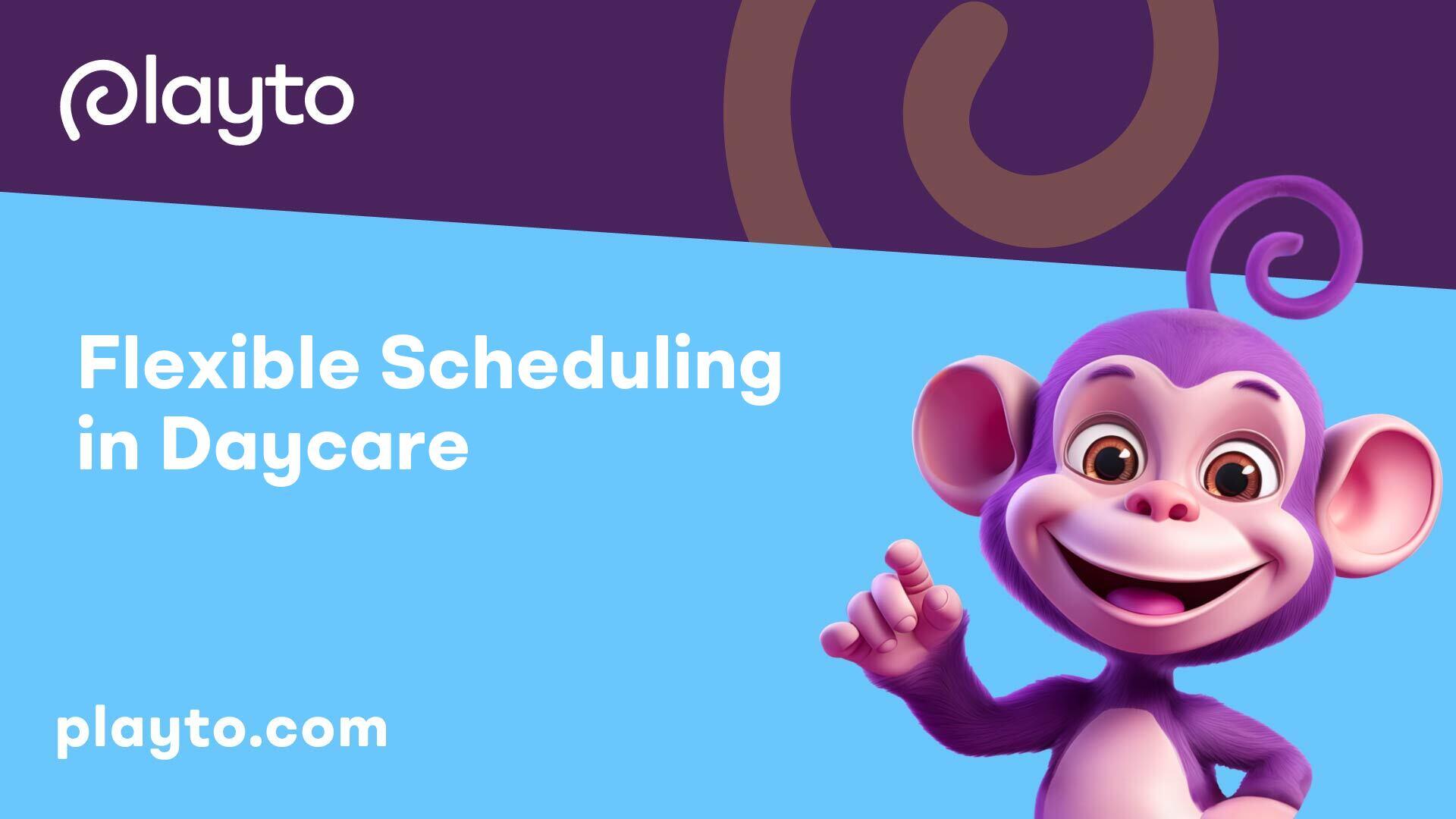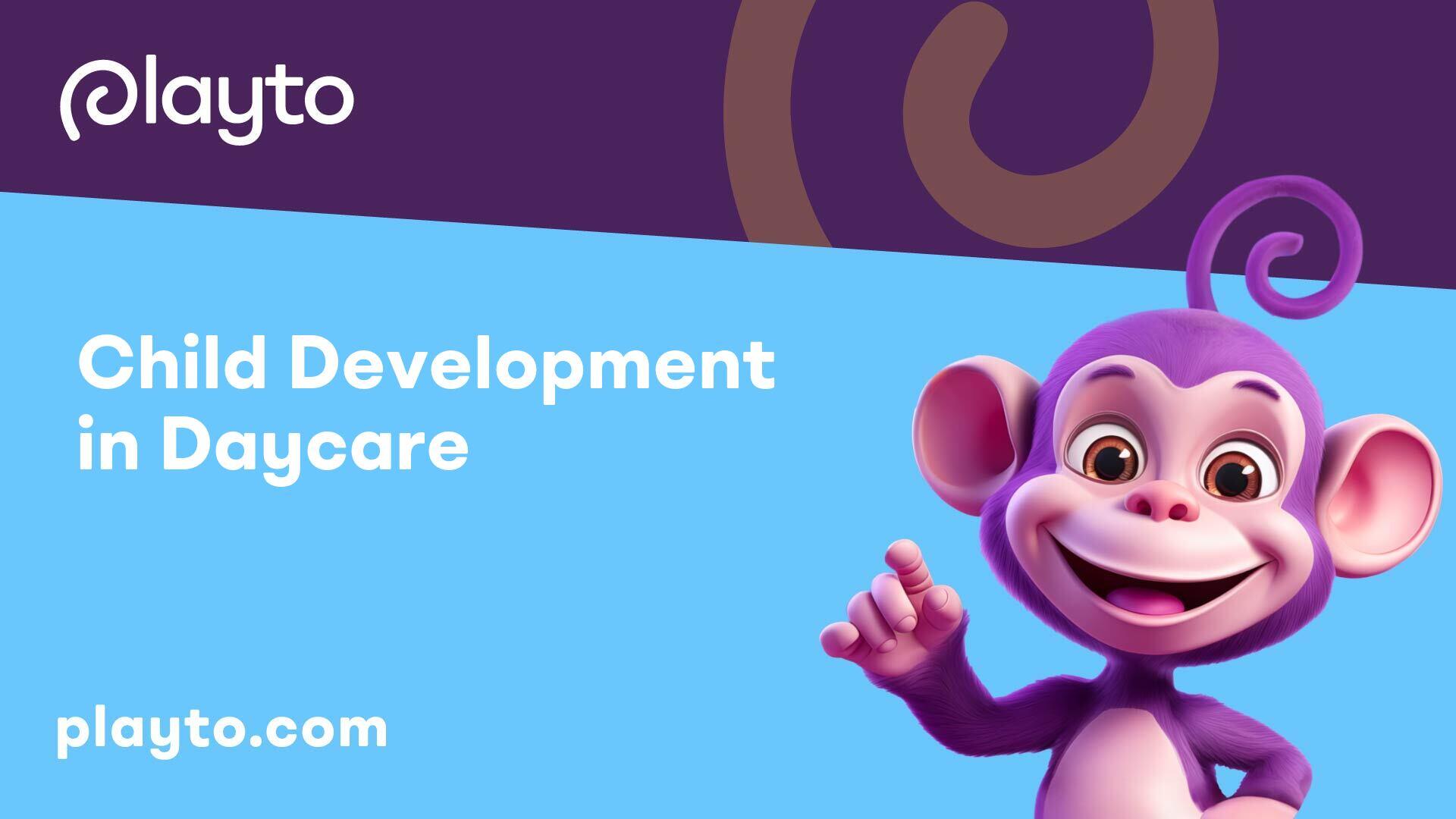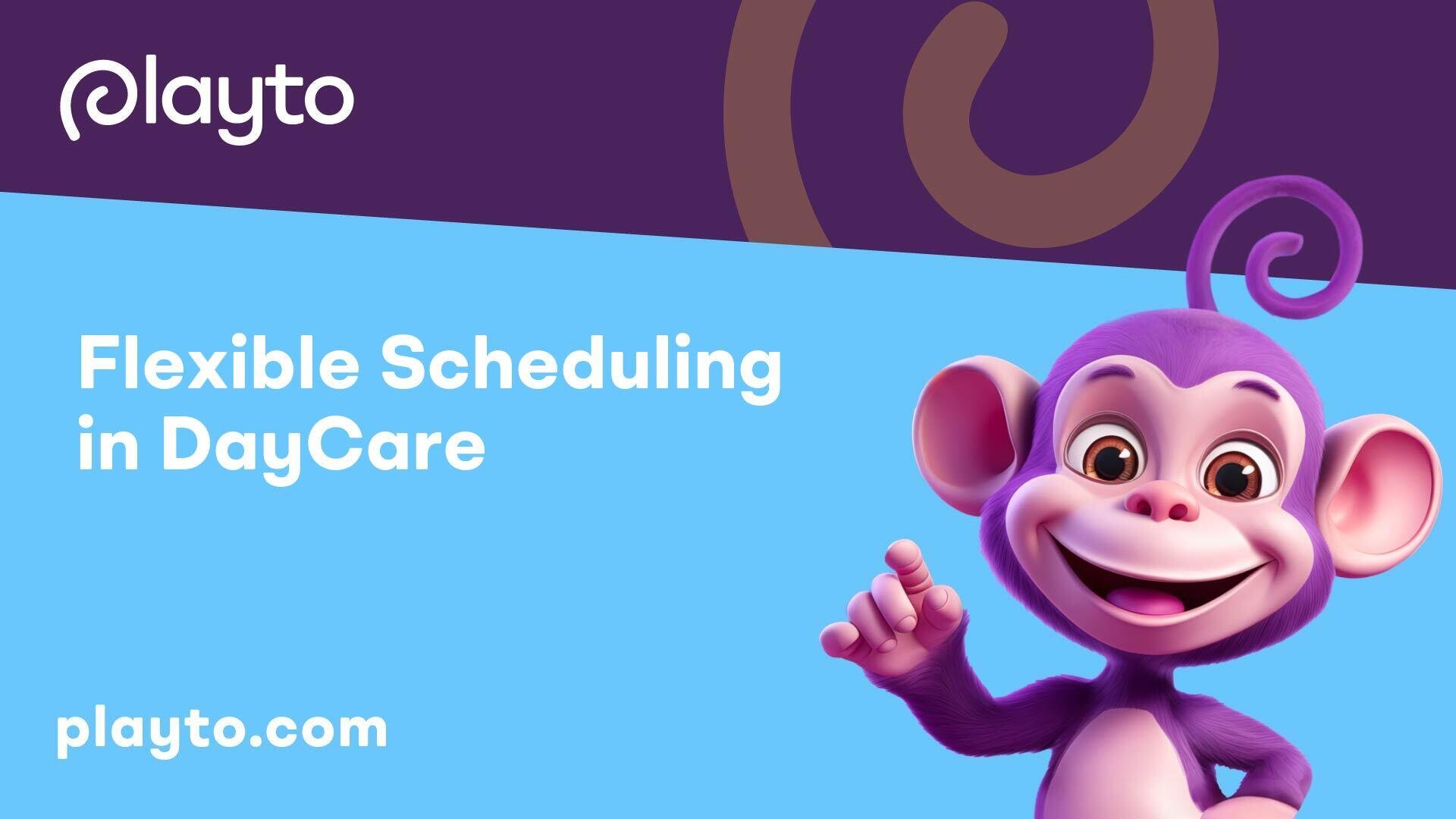
Flexible Scheduling in Daycare
Embracing flexible scheduling in daycare is vital in today's fast-paced society, where achieving a harmonious work-life balance is a top priority. Various strategies within childcare centers aim to accommodate the diverse needs of both employees and families. This section explores the importance of work-life balance and the implementation of innovative scheduling solutions in daycare settings.
Importance of Work-Life Balance
A Gallup poll from 2019 revealed that 53% of employees consider a role that supports work-life balance to be "very important" to them, emphasizing the growing significance of work-life equilibrium in the modern workforce. Incorporating flexible scheduling options in daycare centers can contribute to employee satisfaction, productivity, and overall well-being.
Staggered Shifts for Child Care Providers
Introducing staggered shifts for child care providers can offer valuable benefits by allowing employees to commence and conclude their work at different times. The Center for the Study of Child Care Employment (CSCCE) reported that 62% of child care providers express interest in having varied clock-in times, showcasing the positive reception to this scheduling approach. By enabling staff members to align their schedules with personal commitments, staggered shifts can reduce the stress associated with morning and evening routines.
Job Sharing in Child Care Centers
The adoption of job sharing arrangements in child care centers is on the rise, with approximately 20% of U.S. companies embracing this innovative practice. Job sharing allows employees like Amanda and Brian to collaborate in a single role, tailoring their work hours and responsibilities to suit individual preferences and personal commitments. By sharing tasks and workload effectively, job sharing arrangements foster greater flexibility and support work-life balance for childcare professionals.
Part-Time Work in Daycare
An increasing number of child care providers opt for part-time work arrangements, deviating from the traditional 40-hour workweek. This flexibility enables individuals like Lucy to balance their work responsibilities with personal commitments effectively. About 30% of child care providers embrace part-time schedules, showcasing the value of adaptable work options in daycare settings [1]. Part-time work offers a practical solution for employees seeking work-life balance without compromising their dedication to childcare.
Remote Administrative Roles in Child Care
The transition towards remote administrative roles in child care centers is a notable trend, allowing tasks that do not necessitate physical presence to be carried out from any location. This shift provides flexibility to employees like Claire and Raj, enhancing their work-life balance by eliminating the constraints of a fixed workplace. Remote roles empower childcare professionals to fulfill their job responsibilities efficiently while managing personal commitments outside of the traditional daycare environment.

Child Development in Daycare
In a daycare setting, child development is a key focus, encompassing various aspects that contribute to children's growth and learning. The following elements play vital roles in fostering a nurturing environment for children:
Free-Choice Time Engagement
Research from Virtual Lab School indicates that preschool children exhibit higher engagement levels during free-choice time compared to structured activities led by teachers. Providing children with opportunities for free choice allows them to exercise independence and decision-making skills. This autonomy not only enhances their engagement in activities but also promotes interactions with peers, laying the foundation for improved academic performance in the future.
Outdoor Activities for Children
Engaging children in outdoor activities is beneficial for their physical and cognitive development. Outdoor play allows children to explore their surroundings, interact with nature, and develop gross motor skills. Furthermore, exposure to natural elements can enhance creativity, imagination, and sensory experiences, contributing to holistic child development.
Small-Group Learning Activities
Small-group learning activities in daycare settings offer opportunities for personalized attention and tailored instruction. Children benefit from interactions in smaller groups, facilitating social skills development, peer relationships, and collaborative learning experiences. These activities promote active participation, engagement, and communication among children, fostering a supportive learning environment.
Managing Transitions Effectively
Effective transition management is essential in daycare settings to ensure smooth and seamless movements between activities, routines, and environments. Consistent daily schedules, as emphasized by ECLKC, provide children with predictability, instilling a sense of security and structure. Well-planned transitions help children transition between tasks, locations, and activities without disruptions, promoting a sense of belonging, independence, and self-confidence among infants, toddlers, and young children.
By prioritizing free-choice time engagement, outdoor activities, small-group learning experiences, and effective transition management, daycare centers can create enriching environments that facilitate holistic child development and support children's growth and learning journeys.

Financial Aspects of Daycare
Understanding the financial aspects of daycare is essential for parents considering childcare options. Two critical components to consider are the cost of daycare services and the impact of childcare expenses on families.
Cost of Daycare Services
Daycare can present a significant financial burden for families, often resulting in tough decisions regarding work and home responsibilities. The average cost of daycare services can range from $150 to $250 per week, totaling $7,800 to $13,000 per year. These expenses vary based on location, the age of the child, and the specific services offered by the daycare facility.
It's crucial for parents to factor in daycare costs when planning their budget and making decisions about employment and childcare arrangements. Understanding the fees associated with daycare services can help families make informed choices that align with their financial realities.
Impact of Childcare Expenses
Childcare expenses can have a profound impact on families, especially when the costs exceed the earnings of one or both parents. In some cases, families may find themselves in a situation where one parent needs to quit their job to stay home with their children due to the financial strain of daycare expenses. This can affect career advancement, financial stability, and overall work-life balance.
In addition to the direct financial impact, childcare expenses can influence parents' decisions regarding their career paths and employment options. High childcare costs may limit the opportunities available to parents, leading to challenges in balancing work responsibilities with family obligations.
By understanding the cost of daycare services and being aware of the financial implications of childcare expenses, parents can make informed decisions that support their children's well-being and their own financial stability. It's essential for families to explore available resources, such as flexible scheduling options and childcare assistance programs, to navigate the financial challenges associated with daycare and ensure that children receive quality care while parents maintain a healthy work-life balance.
Parenting Programs and Daycare Engagement
When it comes to flexible scheduling in daycare, engaging parents in parenting programs and daycare activities plays a critical role in fostering a supportive learning environment. However, various barriers can hinder parent participation, affecting program outcomes. Understanding these barriers and implementing effective strategies to encourage engagement can lead to enhanced program satisfaction and improved child and parenting outcomes.
Barriers to Parent Participation
Parents consistently cite time and scheduling constraints as the primary reasons for not enrolling, attending, or completing parenting interventions. Additionally, factors such as work commitments, childcare availability, and transportation challenges can hinder parents' ability to actively engage in parenting programs. Providers working with families at different levels of risk should address parents' stress and perceptions of barriers to improve program engagement.
Strategies to Encourage Engagement
To overcome barriers to parent participation, daycare centers can implement various strategies to promote engagement. Flexible scheduling options, childcare assistance, and transportation support are effective ways to accommodate parents' busy schedules and facilitate their involvement in parenting programs. Proactively addressing potential barriers and troubleshooting solutions throughout the program can enhance parent engagement and increase the likelihood of program completion.
Effective communication between daycare centers and parents is crucial for building trust and ensuring the well-being of children. Establishing regular channels of communication, such as parent-teacher conferences and promptly addressing parents' concerns, fosters a collaborative relationship between parents and daycare providers. By maintaining open lines of communication and actively involving parents in their child's daycare experience, centers can create a supportive and inclusive environment that encourages parent engagement.
Enhanced Program Satisfaction
Greater parent participation in parenting interventions is associated with better child and parenting outcomes, including a reduced risk of child maltreatment recurrence. By actively involving parents in daycare programs and parenting initiatives, centers can create a sense of community and support that benefits both children and families. Enhanced program satisfaction stemming from increased parent engagement leads to a more enriching and fulfilling daycare experience for both parents and children.
By recognizing and addressing barriers to parent participation, implementing effective engagement strategies, and prioritizing open communication, daycare centers can create a supportive and welcoming environment that fosters positive parent involvement. Encouraging parents to actively participate in parenting programs not only benefits the children's development and well-being but also strengthens the bond between families and daycare providers, ultimately enhancing the overall daycare experience.
Importance of Routines and Environments
Creating a structured and nurturing environment in daycare plays a fundamental role in the holistic development of children. This section explores the significance of predictable daily schedules, promoting social and emotional development, and ensuring safe and secure daycare centers.
Predictable Daily Schedules
Consistent daily schedules and step-by-step routines provide children with a sense of security and stability. According to ECLKC, predictable routines help children, especially infants and toddlers, in developing relationships, gaining a sense of belonging, and building self-confidence. As children grow, following routines fosters independence and adaptability to changes.
In daycare settings, establishing a routine that includes activities such as circle time, playtime, snack time, and nap time is vital. This structured approach creates a predictable environment, offering children stability and a sense of security in their daily interactions and engagements.
Promoting Social and Emotional Development
Engaging and predictable environments, coupled with positive adult-child interactions, are essential for nurturing children's social and emotional growth. Clear and simple schedules and routines play a pivotal role in promoting constructive behaviors and preventing challenges.
By following consistent routines and schedules, children learn to anticipate transitions, develop a sense of responsibility, and enhance their interpersonal skills. These routines guide children in understanding expectations, fostering empathy, and creating meaningful connections with their peers and caregivers.
Safe and Secure Daycare Centers
Ensuring a safe and secure environment in daycare centers is paramount for the well-being and safety of children. Establishing hazard-free spaces, providing age-appropriate equipment, and implementing emergency procedures are critical components in safeguarding children in daycare centers.
Creating a safe atmosphere enables children to explore, play, and learn without unnecessary risks. It also promotes the peace of mind for parents, knowing that their children are in a secure environment while they are at work or fulfilling other commitments.
In summary, the importance of routines and environments in daycare cannot be overstated. Predictable schedules, social and emotional development opportunities, and safe surroundings contribute significantly to the overall well-being and growth of children in daycare settings, providing a foundation for their future success.
Effective Communication Strategies
In the realm of daycare management, effective communication strategies play a crucial role in fostering trust between daycare centers and parents, ultimately contributing to the well-being and development of children. By establishing strong communication channels, such as building trust with parents and conducting regular parent-teacher conferences, daycare centers can ensure transparency and alignment in caring for the children.
Building Trust with Parents
Building trust with parents is fundamental for a successful daycare experience. By maintaining open lines of communication, addressing concerns promptly, and involving parents in their child's daily activities, daycare centers can create a sense of partnership and collaboration. Transparency about activities, learning outcomes, and any incidents that may occur helps to build trust and confidence in the daycare's operations.
Through frequent updates via emails, newsletters, or mobile apps, parents can stay informed about their child's progress, fostering a sense of involvement and reassurance. Implementing a procedure for feedback and suggestions from parents also demonstrates a commitment to continuous improvement and responsiveness to parental needs.
Regular Parent-Teacher Conferences
Regular parent-teacher conferences provide a structured platform for daycare centers to engage with parents, discuss their child's development, and address any concerns or questions. These conferences offer a valuable opportunity for caregivers to share insights into a child's behavior, learning milestones, and social interactions.
During these meetings, parents can gain a deeper understanding of their child's daily routine, strengths, and areas for growth. By receiving personalized feedback and guidance from the childcare providers, parents can actively participate in supporting their child's development both at daycare and at home.
Establishing a consistent schedule for parent-teacher conferences helps to maintain ongoing communication and strengthen the partnership between parents and daycare staff. These meetings serve as a forum for collaborative decision-making and goal setting, ensuring that the child's individual needs and interests are prioritized.
By prioritizing building trust with parents and conducting regular parent-teacher conferences, daycare centers can cultivate a supportive and communicative environment that benefits both children and their families. Effective communication strategies lay the foundation for a successful daycare experience, promoting collaboration and understanding among all stakeholders involved in the child's care and development.
Flexibility in Child Care Arrangements
Ensuring flexibility in child care arrangements is crucial for meeting the needs of both children and parents. Understanding the behavioral effects of child care instability, implementing large-group activities for preschoolers, and optimizing free-choice time are key aspects to consider in enhancing the childcare experience.
Behavioral Effects of Child Care Instability
Research indicates that child care instability, especially long-term instability and multiplicity, may lead to various behavioral issues in children under the age of 5. This includes higher levels of externalizing and internalizing behavior problems and fewer prosocial behaviors [5]. It's essential for child care providers to create a stable and nurturing environment to support children's social and emotional development.
Large-Group Activities for Preschoolers
Incorporating large-group activities in preschool settings can be beneficial for children's overall development. Activities like reading stories, singing songs, and building classroom community help in developing early literacy skills, improving attention span, and enhancing behavior regulation. It is recommended that these teacher-initiated large-group activities are kept brief, ideally lasting 15 to 20 minutes, to maintain children's engagement and interest.
Optimizing Free-Choice Time
During free-choice time in preschool classrooms, children have the opportunity to engage in activities of their choice, leading to increased interest and commitment. Research suggests that children are more likely to stay engaged and demonstrate improved peer interactions during free-choice time compared to teacher-directed activities [6]. This autonomy in selecting activities enhances children's decision-making skills and fosters a sense of independence and responsibility.
By addressing the behavioral effects of child care instability, incorporating purposeful large-group activities, and optimizing free-choice time, child care providers can create a dynamic and nurturing environment that supports children's holistic development. Prioritizing flexibility in child care arrangements ensures that children receive the individualized care and support they need to flourish in their early learning experiences.
Outdoor Time and Transitions
When it comes to daycare, outdoor time plays a crucial role in the well-rounded development of children. Spending at least 60 minutes per day outdoors offers various benefits, including the opportunity for children to strengthen large muscles, interact with the natural world, and engage in physical activities, contributing to their overall well-being [6].
Benefits of Outdoor Play
Outdoor play is an essential component of the preschool day, much like free-choice time indoors. It provides children with opportunities for self-directed play, peer interaction, and the development of gross motor skills. Research indicates that dedicating sufficient time to outdoor play can enhance children's physical activity levels and reduce the risk of future health issues.
Smooth Transitions in Preschool
Transitions within preschool settings are inevitable but can sometimes pose challenges for children's engagement. Implementing strategies such as providing "open snack" times, offering warnings before transitions, using visual aids, and incorporating songs can facilitate smoother transitions between activities. By optimizing transitions, teachers can sustain children's focus and minimize disruptions throughout the day.
Strategies for Transition Management
To effectively manage transitions in preschool, educators can adopt various strategies to create a seamless flow throughout the day. Incorporating visual timetables and cues can help children anticipate upcoming transitions and prepare them for the change. Providing clear and concise instructions before transitioning from one activity to another can also aid in maintaining order and cooperation.
Furthermore, establishing consistent routines and rituals can create a sense of predictability for children, easing their transitions between different activities. Encouraging children to take ownership of their transitions by involving them in setting timers or signaling devices can empower them and foster their independence.
By recognizing the importance of smooth transitions and implementing effective management strategies, daycare providers can ensure a positive and structured environment for children, promoting their engagement and overall development in the preschool setting.
References
[2]: https://www.studocu.com/en-us/messages/question/
[3]: https://www.ncbi.nlm.nih.gov/pmc/articles/PMC5812022/
[4]: https://www.parent.app/blog/effective-strategies-for-managing-daycare-center
[5]: https://www.ncbi.nlm.nih.gov/pmc/articles/PMC4307839/
[6]: https://www.virtuallabschool.org/preschool/learning-environments/lesson
